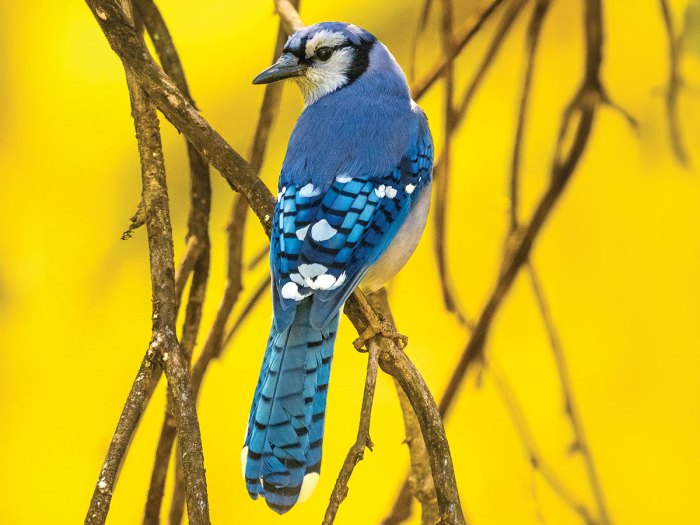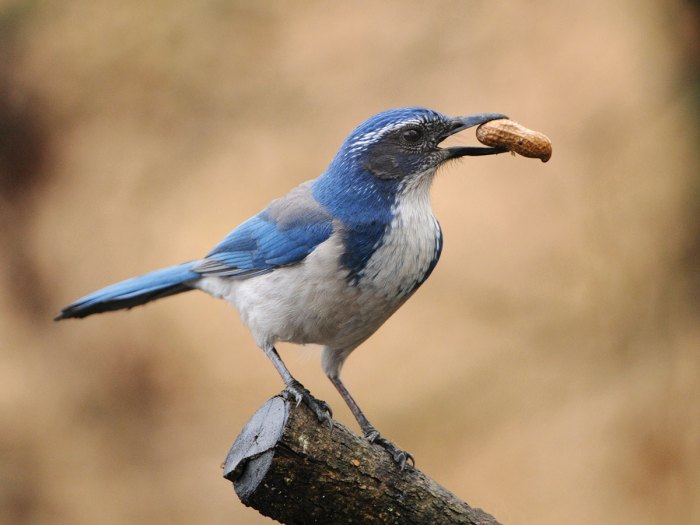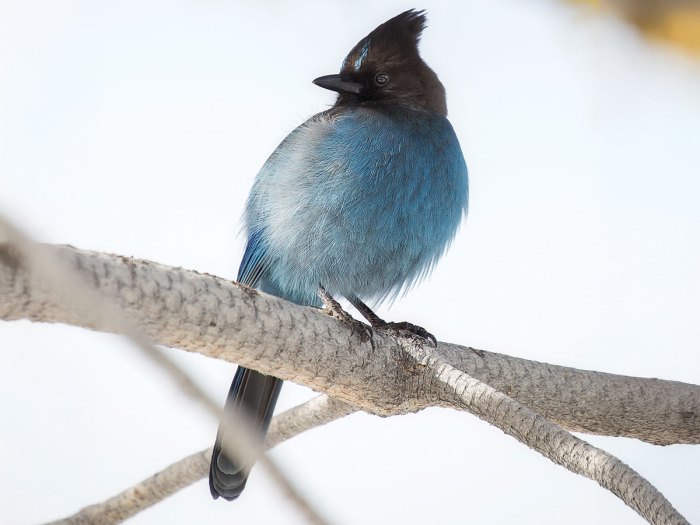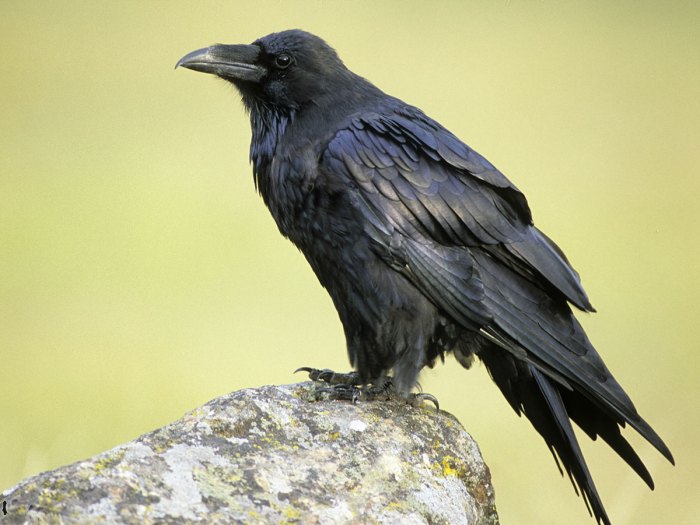Clever Curious Corvids: Learn About This Family of Brainy Birds

Blue jay
Crows, ravens, magpies, nutcrackers and jays — these songbirds are all corvids, a family with many of the world’s smartest and most social birds. Their intelligence exceeds that of all other bird families, except parrots.
NO “BIRDBRAINS” HERE
With their large brain-to-body size (larger than all other bird families), corvids have complex learning and recognition skills, similar to those of primates. In experiments, crows and ravens solve challenging puzzles designed for them to access a reward (food).

California scrub-jay with peanut
Corvids are so curious, they can even figure out how to use tools without being shown. In the wild, crows have been observed dropping nuts on paved roads and waiting for cars to drive over them so they can then pick out the edible parts of the crushed nuts. Corvids are also good at recognizing individuals. Experiments show that American crows (and other corvids) can identify specific human faces and even people’s facial expressions.
Their language is also highly developed. Listen to crows, jays or ravens, and you’ll notice how many different vocalizations they have! They can also learn vocal mimicry. Blue jays imitate the calls of red-shouldered hawks nearly perfectly, while crows and ravens have a much wider range, mimicking all sorts of sounds, from other animals to mechanical sounds and even human words. While visiting friends in Canada, we heard a common raven several times say the name of our friends’ dog. The raven had heard the dog’s name being yelled over and over and learned to mimic it!

Steller’s jay
FAMILY DEVOTION
Corvids are very social birds and are close to family members. There’s a strong bond not just between parents and young but also between mates, who are typically together for life. Another amazing characteristic of corvids, which appears more often than with most other birds, is something called “cooperative breeding.”
With corvids, this is when the offspring of a pair of jays or crows, for example, stay with their parents even after they are old enough to be on their own. It helps them learn even more for when they do finally go off to raise their own families, but it’s also so they can help their parents raise future clutches of young — their siblings. They might help with nest building, feeding the young or removing poop from the nest.
They can also act as lookouts for hawks, owls or snakes, warning the family when these predators appear. Groups of jays and other songbirds will come together to squawk at a snake or raptor to let the predator know that there will be no meal while “we see you!” Corvids often harass predators larger than themselves. Jays might dive-bomb a crow, and a crow might dive-bomb an even larger predator, like a red-tailed hawk!
The strong family bond in corvids is also shown in their behavior when a family member dies. They mourn the loss deeply. At our home in Florida, a rat snake once killed a blue jay, and a family member perched above on a tree branch making sad sounds for a long time. It was a very emotional observance.

Common raven
WILD FRIENDS
Corvids are found on all continents except Antarctica, with 130 species worldwide. Nearly all of the 20 corvid species native to the U.S. are year-round residents, staying in the same area their whole lives. However, some individuals of certain species, particularly blue jays and American and fish crows, might migrate short distances, heading to warmer areas in the winter. Crows can gather in huge flocks in the hundreds or even thousands (called a “murder” of crows) — safety in numbers!
Many people think crows, ravens, magpies and jays are obnoxious or don’t like them because they are noisy or seem to chase off other birds, but we hope that you’ll come to appreciate and respect these brainy birds. Their ability to adapt and learn is truly remarkable and puts them in a league with other clever, curious creatures. Remember, they can recognize your face and your sounds, so talk to them nicely, put out feeders and water for them, and they might become your “wild” friends!
4 FAST FACTS ABOUT CORVIDS
1. Corvids typically live long lives. One blue jay in the wild lived to be 26 years old. A common raven in captivity lived to the ripe old age of 69.
2. Common ravens are the largest corvid, as well as the largest songbird in the world, weighing up to 3.5 pounds!
3. Corvids store food to eat later — sometimes half a year later or longer! Blue jays and scrubjays cache acorns, and nutcrackers cache pine nuts. Scrub-jays have been known to cache thousands of acorns from one year’s crop.
4. Experiments have shown that crows can use tools, plan ahead, barter for future food rewards and learn to perform tasks even faster than some primates.
Bats and birds are their specialties, but wildlife biologists Selena Birgit Kiser and Mark Kiser love all species of critters. Both have worked for the State of Florida and previously worked for Bat Conservation International on such programs as the Great Florida Birding and Wildlife Trail and the North American Bat House Research Project.
Leave a Comment